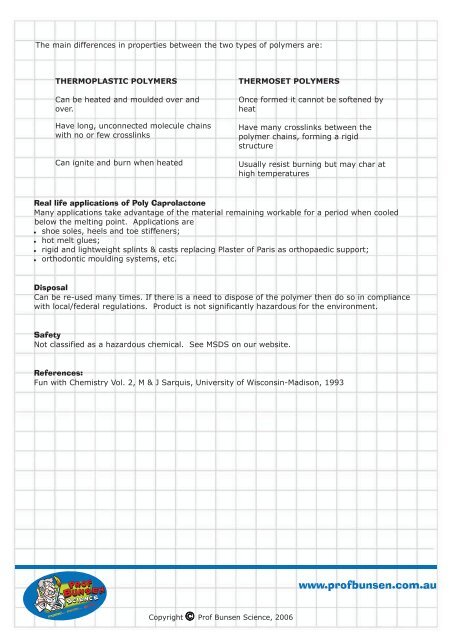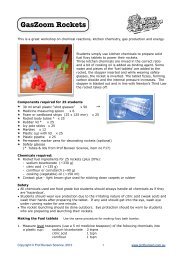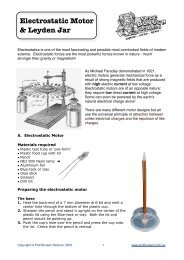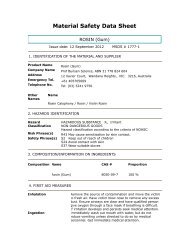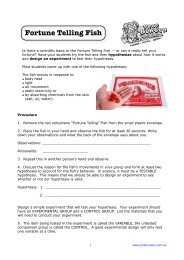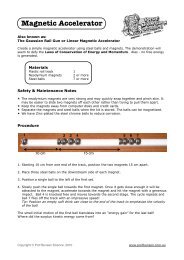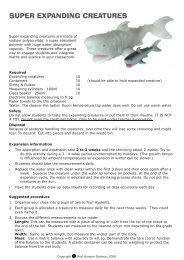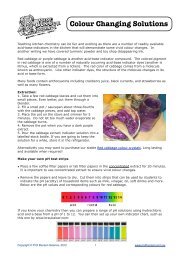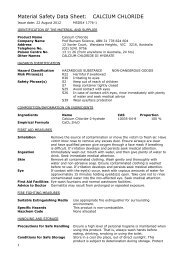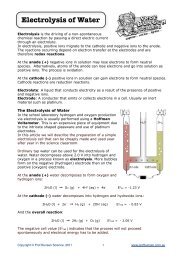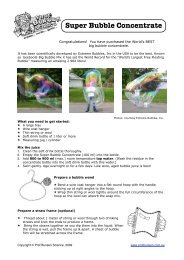Thermoplastic Polymer - Prof Bunsen
Thermoplastic Polymer - Prof Bunsen
Thermoplastic Polymer - Prof Bunsen
You also want an ePaper? Increase the reach of your titles
YUMPU automatically turns print PDFs into web optimized ePapers that Google loves.
The main differences in properties between the two types of polymers are:<br />
THERMOPLASTIC POLYMERS<br />
Can be heated and moulded over and<br />
over.<br />
Have long, unconnected molecule chains<br />
with no or few crosslinks<br />
Can ignite and burn when heated<br />
THERMOSET POLYMERS<br />
Once formed it cannot be softened by<br />
heat<br />
Have many crosslinks between the<br />
polymer chains, forming a rigid<br />
structure<br />
Usually resist burning but may char at<br />
high temperatures<br />
Real life applications of Poly Caprolactone<br />
Many applications take advantage of the material remaining workable for a period when cooled<br />
below the melting point. Applications are<br />
shoe soles, heels and toe stiffeners;<br />
hot melt glues;<br />
rigid and lightweight splints & casts replacing Plaster of Paris as orthopaedic support;<br />
orthodontic moulding systems, etc.<br />
Disposal<br />
Can be re-used many times. If there is a need to dispose of the polymer then do so in compliance<br />
with local/federal regulations. Product is not significantly hazardous for the environment.<br />
Safety<br />
Not classified as a hazardous chemical. See MSDS on our website.<br />
References:<br />
Fun with Chemistry Vol. 2, M & J Sarquis, University of Wisconsin-Madison, 1993<br />
www.profbunsen.com.au<br />
Copyright <strong>Prof</strong> <strong>Bunsen</strong> Science, 2006


